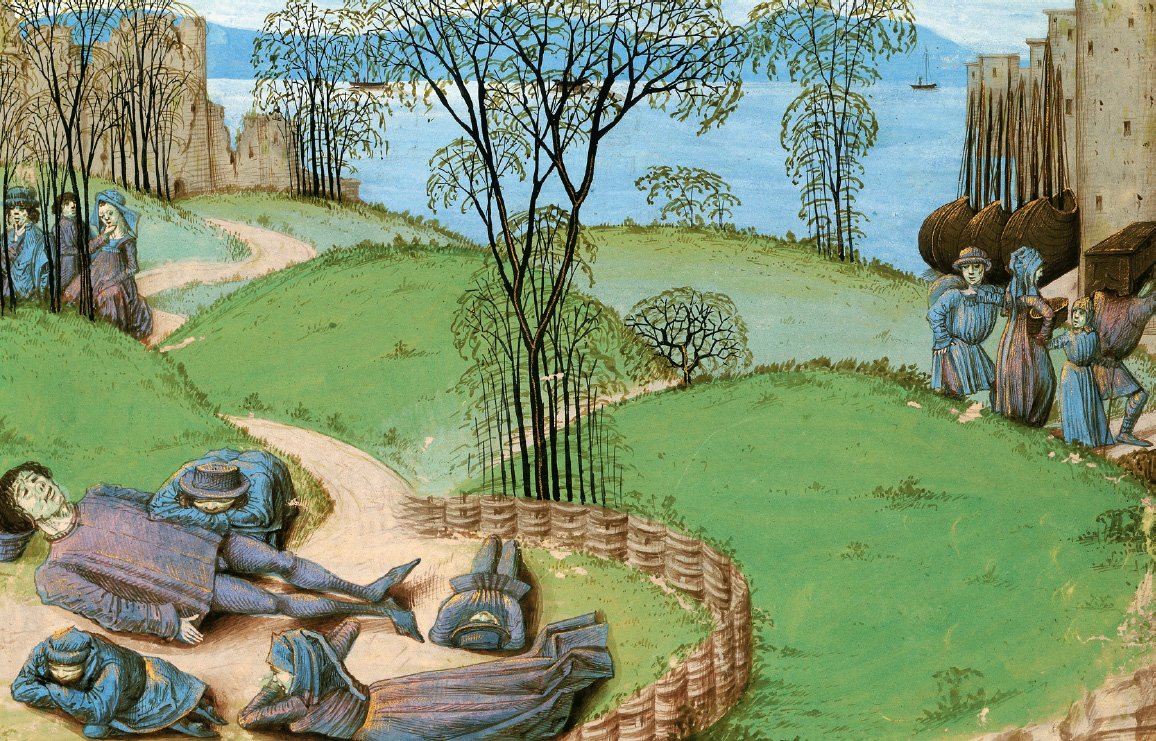A History of Western Society: Printed Page 324
A History of Western Society, Value Edition: Printed Page 332
Climate Change and Famine
The period from about 1000 to about 1300 saw a warmer-than-usual climate in Europe, which underlay all the changes and vitality of the High Middle Ages. Around 1300, however, the climate changed for the worse, becoming colder and wetter. Historical geographers refer to the period from 1300 to 1450 as a “little ice age,” which they can trace through both natural and human records.
Evidence from nature emerges through the study of Alpine and polar glaciers, tree rings, and pollen left in bogs. Human-produced sources include written reports of rivers freezing and crops never ripening, as well as archaeological evidence such as the collapsed houses and emptied villages of Greenland, where ice floes cut off contact with the rest of the world and the harshening climate meant that the few hardy crops grown in earlier times could no longer survive. The Viking colony on Greenland died out completely, though Inuit people who relied on hunting sea mammals continued to live in the far north, as they had before the arrival of Viking colonists.
Across Europe, an unusual number of storms brought torrential rains, ruining the wheat, oat, and hay crops on which people and animals almost everywhere depended. Since long-distance transportation of food was expensive and difficult, most urban areas depended for grain, produce, and meat on areas no more than a day’s journey away. Poor harvests — and one in four was likely to be poor — led to scarcity and starvation. Almost all of northern Europe suffered a Great Famine in the years 1315 to 1322, which contemporaries interpreted as a recurrence of the biblical “seven lean years” that afflicted Egypt.
Even in non-famine years, the cost of grain, livestock, and dairy products rose sharply, in part because diseases hit cattle and sheep. Increasing prices meant that fewer people could afford to buy food. Reduced caloric intake meant increased susceptibility to disease, especially for infants, children, and the elderly. Workers on reduced diets had less energy, which meant lower productivity, lower output, and higher grain prices.
